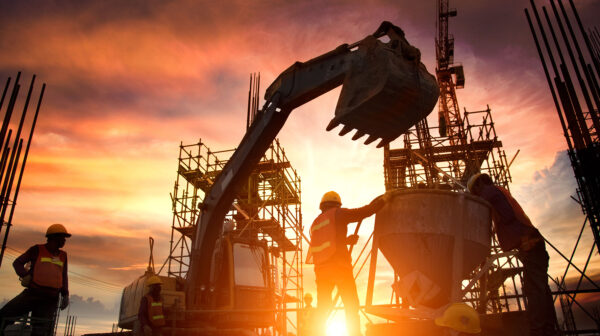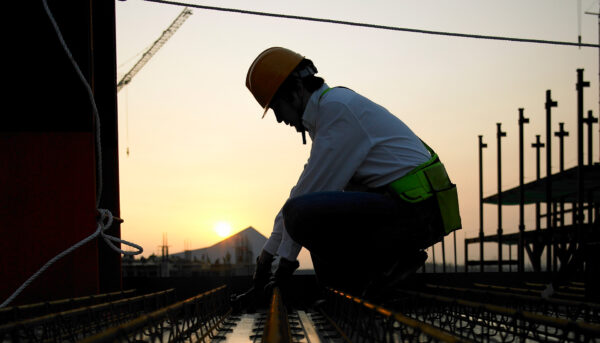Over the past three weeks, we have seen the COVID-19 pandemic create business chaos across all of Canada. For many employers, especially in the construction industry, they have been faced with daily issues of ensuring sufficient manpower levels in order to maintain construction schedules and to otherwise have business continuity.
For those engaged in construction projects, this pandemic has rendered each work day to be a consistent and daily exercise, not just to keep projects running, but to keep their workers employed.
Over the past week, keeping construction projects and individual sites open has become even more difficult due to Construction Unions urging Premier Ford to shut down all construction sites for at least 14 days, claiming that the conditions are unsafe for workers.
Despite the insistence from the Construction Unions, though, on March 23, 2020, Construction sites were deemed essential workplaces in Ontario, allowing construction workers to continue working and projects to continue.
By Wednesday, March 25th, Union leaders were seen attending on construction sites across the City of Toronto, imploring its members to walk off the job. As of publishing this bulletin, it is clear that one of the greatest challenges to all involved in the construction industry will be to keep workers showing up and to keep working.
With the above in mind, construction employers in Ontario must be prepared to ensure that they continue to maintain safe and healthy workplaces, sites, as required under the Occupational Health and Safety Act (the “OHSA”).
In order to keep construction sites open for work, we provide the following summary to deal with work refusals on-site and maintaining business continuity.
OHSA Duties of Construction Employers
Most of the duties of construction employers with respect to maintaining safe and healthy workplaces and sites are provided under sections 25 and 26 of the OHSA. Those primary duties include the following:
- Ensure that the OHSA and all regulations are complied with;
- Provide and maintain all required equipment, materials and protective devices;
- Ensure that all required measures and procedures are followed;
- Take every precaution reasonable in the circumstances for the protection of workers;
- Have written health and safety policies, with procedures and programs to implement those policies; and
- Have a supervisor present at all times.
All requirements noted-above remaining the same and otherwise met, during the COVID-19 Pandemic, the most difficult task for employers in the construction industry may invariably be in ensuring that all precautions reasonable in the circumstances are taken in order to protect the workers.
While specific to the COVID-19 Pandemic, construction employers, including those constructors responsible for most measures to be taken on construction sites, should consider taking the following measures to ensure safe and healthy working conditions on those sites:
- maintain sanitary washroom stations;
- provide running water at hand-washing stations;
- provide sufficient hand sanitizer stations;
- provide necessary personal protective equipment;
- have designated lunch/break areas, with sufficient space to allow continued social distancing;
- deliver on-site safety protocols and policies to all workers, including subcontractors, directing all workers to maintain a safe work-isolation distance from one another (current local health recommendation of at least 2 metres apart);
- avoid working in groups within any confined space;
- conduct daily workplace hazard assessments;
- provide continuing written information regarding COVID-19 to all on-site workers and post this information in conspicuous locations throughout the worksite;
- have on-site, specific COVID-19 health and safety policy (updated on a regular basis);
- have site-supervisors meet with all on-site workers on a daily basis to update and remind all workers of all health and safety precautions, rules and policies;
- ensure that all communications for contractors, suppliers and visitors have been delivered ahead of time and posted at entrances/loading docks; and
- strictly enforce all workplace health and safety policies and protocols.
Despite taking all of the above precautions, all construction employers and constructors must be prepared for workplace disputes and possible work refusals related to the health and safety on-sites and workplace conditions.
Work Refusals
When faced with a work refusal related to the health and safety of the worksite, the OHSA prescribes distinct steps to be followed. Those necessary steps and individuals engaged will depend on whether the worker or workers affected by the refusal are unionized or non-unionized. Below are flowcharts for each scenario:
It is important to note that neither the employer nor worker/union is an adjudicator of whether a workplace is safe, once a work refusal has been made, unless an agreement is reached prior to engaging the Ministry of Labour.
After the Ministry of Labour Inspector has determined the worksite to be safe, including once any specific Orders have been completed, any continued work refusal would be inappropriate. Under said continued work refusal, the employer should consider engaging its policies and/or collective agreement for dealing with those specific employees. Given the prohibition against reprisals under the OHSA, employers should seek counsel from its legal advisors before instituting any form of discipline.
Where any remediation Order is made by the MOL Inspector, those prescribed measures must be taken before returning the employee to work, or in applicable circumstances, allowing workers to return to the worksite.
Our Thoughts
The right to a safe and healthy workplace is a fundamental entitlement of all workers in Ontario, and each jurisdiction across Canada. Given the pressure currently being brought upon construction employers and constructors under the current COVID-19 Pandemic, the above should be viewed as an imperative in order to ensure business continuity of construction worksites.
Of additional consideration, where constructors and/or subcontractors are required to maintain construction schedules under contract, it will be necessary to guarantee the provision and maintenance of those safe worksites.
We continue to advise all our construction employers and constructors to remain vigilant during these difficult times. Where concerns arise on any construction project related to health and safety matters, in addition to employment and labour law obligations, we strongly recommend engaging our expert legal advisors.
Miller Thomson is closely monitoring the COVID-19 situation to ensure that we provide our clients with appropriate support in this rapidly changing environment. For articles, information updates and firm developments, please visit our COVID-19 Resources page.



